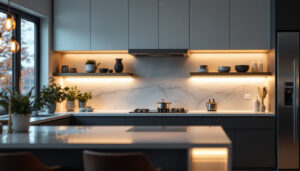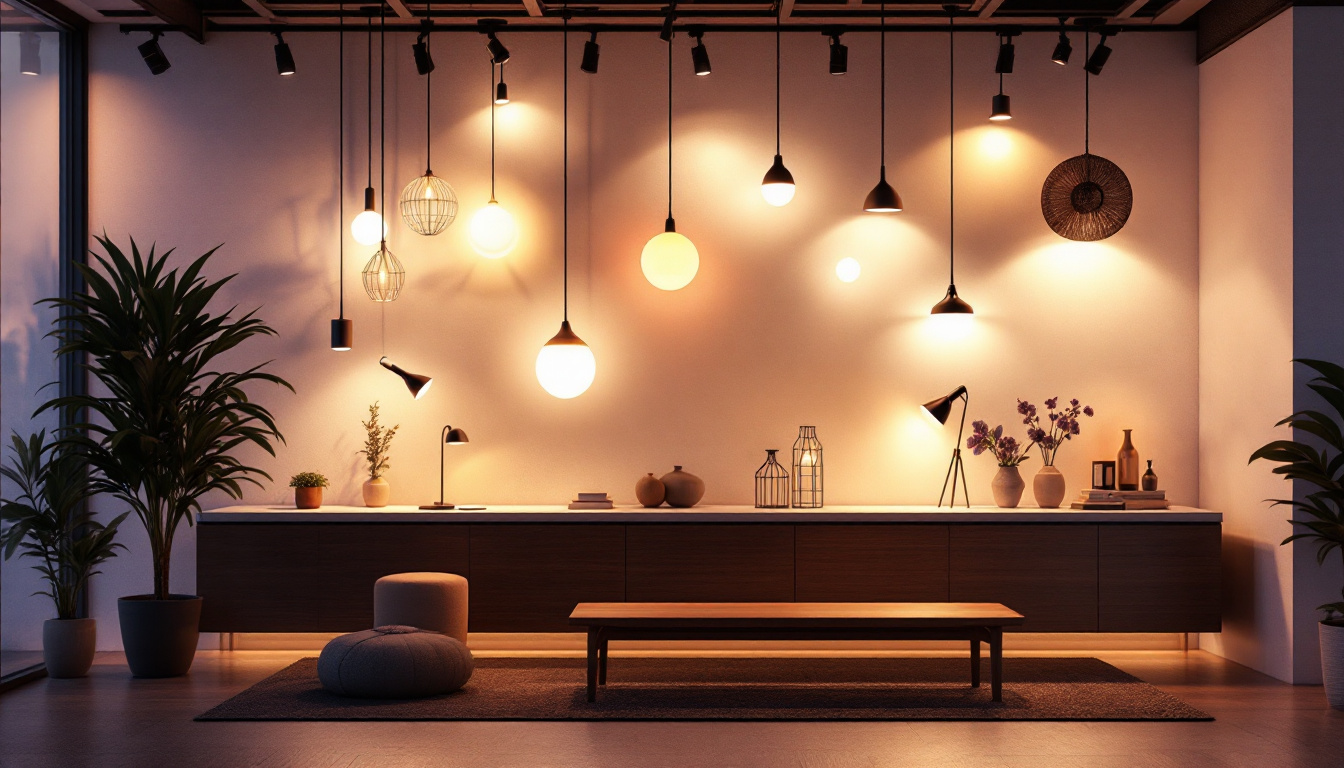

industrial track lighting has emerged as a pivotal element in the realm of commercial and industrial spaces. This versatile lighting solution not only enhances the aesthetic appeal of a space but also provides functional illumination that meets the needs of various applications. For lighting contractors, understanding the intricacies of industrial track lighting can significantly impact project outcomes and client satisfaction.
track lighting systems consist of a linear track that houses multiple light fixtures. This design allows for flexibility in positioning and adjusting the lights, making it ideal for environments where lighting needs may change frequently. Whether in warehouses, retail settings, or manufacturing facilities, industrial track lighting can be tailored to suit specific requirements.
One of the primary advantages of industrial track lighting is its adaptability. Contractors can easily reposition fixtures along the track to direct light where it is most needed. This feature is particularly beneficial in dynamic environments where the layout may shift or evolve over time.
Moreover, industrial track lighting often utilizes LED technology, which offers energy efficiency and longevity. This not only reduces operational costs but also aligns with sustainability goals that many businesses are striving to achieve. The reduced heat output of LEDs also contributes to a more comfortable working environment.
Industrial track lighting finds applications across a wide range of industries. In retail spaces, for example, it can highlight merchandise and create an inviting atmosphere that encourages customer engagement. In manufacturing facilities, it ensures that work areas are well-lit, promoting safety and productivity.
Additionally, track lighting can be used in art galleries and exhibition spaces to accentuate artwork and installations. Its versatility allows lighting contractors to cater to diverse client needs, making it an invaluable asset in their toolkit.
Beyond these common applications, industrial track lighting is also gaining traction in hospitality settings, such as restaurants and hotels, where ambiance is crucial. By strategically placing fixtures along the track, establishments can create a warm and welcoming environment that enhances the dining or lodging experience. Furthermore, in educational institutions, track lighting can illuminate classrooms and lecture halls effectively, ensuring that students and teachers alike benefit from clear visibility and focus during lessons.
Another noteworthy application is in the realm of event spaces, where track lighting can be adapted for various functions, from corporate meetings to weddings. The ability to adjust the lighting to suit different themes or moods makes it an essential component for event planners looking to create memorable experiences. As the demand for flexible and efficient lighting solutions continues to grow, industrial track lighting stands out as a reliable choice that meets the evolving needs of modern industries.
For lighting contractors, selecting the right components of an industrial track lighting system is crucial. This involves understanding the various types of tracks, fixtures, and bulbs available in the market. Each component plays a significant role in the overall performance and effectiveness of the lighting solution.
There are generally three types of tracks used in industrial track lighting: H, J, and L tracks. Each type has its unique characteristics and compatibility with specific fixtures. H tracks, for instance, are the most common and are compatible with a wide range of fixtures, making them a popular choice among contractors.
J and L tracks, on the other hand, may be preferred for specialized applications. Understanding these differences enables contractors to make informed decisions that align with their clients’ needs and project specifications.
The choice of fixtures is equally important. Options range from adjustable spotlights to pendant lights, each offering different levels of illumination and design aesthetics. Adjustable fixtures are particularly beneficial in spaces where lighting needs may vary, allowing for targeted illumination.
Contractors should also consider the color temperature of the fixtures. Warmer tones can create a cozy atmosphere, while cooler tones are often preferred in industrial settings for their clarity and focus. Aligning the fixture selection with the intended use of the space can enhance the overall effectiveness of the lighting design.
Proper installation is key to maximizing the benefits of industrial track lighting. Lighting contractors must adhere to best practices to ensure safety, efficiency, and optimal performance. This includes understanding the electrical requirements, weight limits, and spacing guidelines for track lighting systems.
Before installation, it is essential to assess the electrical infrastructure of the space. Contractors should ensure that the existing wiring can support the load of the track lighting system. This may involve consulting with an electrician to evaluate the circuit capacity and make any necessary upgrades.
Additionally, understanding the voltage requirements of the chosen fixtures is crucial. Most track lighting systems operate on either 120V or 277V, and selecting the appropriate voltage will prevent issues during installation and operation.
When installing track lighting, spacing is a critical factor. Fixtures should be evenly distributed along the track to provide uniform illumination. A common guideline is to space fixtures approximately 4 to 6 feet apart, but this may vary depending on the specific application and desired light levels.
Contractors should also consider the layout of the space. For example, in retail environments, fixtures may need to be positioned to highlight specific displays, while in industrial settings, they should focus on work areas and pathways. A well-thought-out layout enhances both functionality and aesthetics.
Once installed, industrial track lighting systems require regular maintenance to ensure optimal performance. Lighting contractors should advise clients on best practices for upkeep, including cleaning, bulb replacement, and periodic inspections.
Dust and debris can accumulate on fixtures and tracks, diminishing the quality of light output. Regular cleaning is essential to maintain brightness and efficiency. Contractors can recommend specific cleaning methods and products that are safe for the materials used in the lighting system.
Additionally, ensuring that fixtures are free from obstructions will enhance their effectiveness. This includes checking for any items that may block the light path or cause shadows in the intended areas.
As with any lighting system, bulbs will eventually need to be replaced. Contractors should educate clients on the lifespan of the chosen bulbs and provide guidance on when replacements are necessary. Utilizing LED bulbs can extend intervals between replacements, contributing to lower maintenance costs.
Furthermore, advancements in lighting technology may present opportunities for upgrades. Contractors should stay informed about new products and trends in the industry, allowing them to offer clients the latest solutions that enhance energy efficiency and performance.
Lighting contractors play a crucial role in educating clients about the benefits and functionalities of industrial track lighting. Engaging clients in the decision-making process fosters trust and leads to more satisfactory outcomes. This can be achieved through consultations, demonstrations, and providing informative resources.
Before commencing a project, conducting thorough consultations with clients is essential. Understanding their specific needs, preferences, and budget constraints will help contractors tailor solutions that meet expectations. This collaborative approach ensures that clients feel valued and involved in the process.
During assessments, contractors can evaluate the existing lighting conditions and identify areas for improvement. This not only highlights the benefits of industrial track lighting but also positions the contractor as a knowledgeable partner in the project.
Where possible, contractors can offer demonstrations of different lighting options. This hands-on approach allows clients to see the effects of various fixtures and layouts in real-time, aiding in their decision-making process. Additionally, having a showroom with samples of track lighting systems can serve as a valuable resource for clients.
The lighting industry is continually evolving, with new technologies and design trends emerging regularly. For lighting contractors, staying informed about these changes is crucial for maintaining a competitive edge. Embracing innovation can lead to enhanced service offerings and improved client satisfaction.
Smart lighting solutions are gaining traction in various sectors, including industrial applications. Incorporating smart technology into track lighting systems allows for greater control and customization. Features such as dimming capabilities, color changing, and remote operation can significantly enhance the user experience.
Contractors should explore partnerships with manufacturers who offer smart lighting products. This not only expands their service offerings but also positions them as forward-thinking professionals in the field.
In addition to technology, design trends play a significant role in lighting choices. Minimalist and industrial aesthetics are particularly popular in contemporary spaces. Understanding these trends enables contractors to provide clients with solutions that align with current styles while still being functional.
Contractors can also leverage design software to create visual representations of proposed lighting layouts. This not only aids in the planning process but also helps clients visualize the final outcome, enhancing their confidence in the contractor’s expertise.
Industrial track lighting is more than just a functional lighting solution; it is a key component of a successful lighting contractor’s toolkit. By understanding its benefits, components, installation best practices, and maintenance requirements, contractors can provide exceptional service that meets the diverse needs of their clients.
Moreover, engaging clients through education and staying informed about industry trends will further enhance their reputation and success in the field. As the demand for efficient and adaptable lighting solutions continues to grow, embracing industrial track lighting will undoubtedly pave the way for a brighter future in the lighting industry.
Ready to elevate your lighting game and achieve success with every project? At LumenWholesale, we provide lighting contractors with the industrial track lighting solutions you need to outshine the competition. Our commitment to quality, affordability, and convenience ensures you have access to the best spec-grade lighting products at wholesale prices. Say goodbye to middleman markups and hello to free shipping on bulk orders, making your purchases seamless and cost-effective. Don’t compromise on lighting—choose LumenWholesale for the perfect fusion of performance and price. Wholesale Lighting at the Best Value is just a click away. Enhance your lighting capabilities today!

Discover essential insights into light fixtures that every lighting contractor should know.

Discover the latest trends in build lighting that every contractor needs to stay ahead in the industry.

Discover the latest trends in 4 ft LED bulbs that every lighting contractor needs to know.

Discover the ultimate guide for lighting contractors navigating the world of wholesale light fixtures.
Get notified when NEW deals are released.
Optimize your budget with wholesale discounts.
Only top-quality, specification-grade lighting products.
No additional costs at checkout - what you see is what you pay.
We understand the unique needs of contractors.